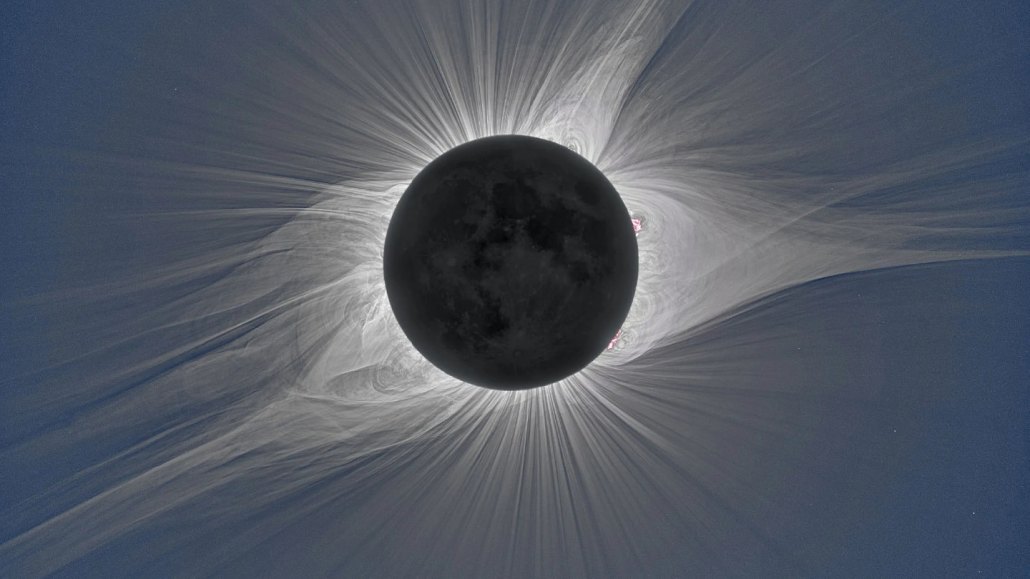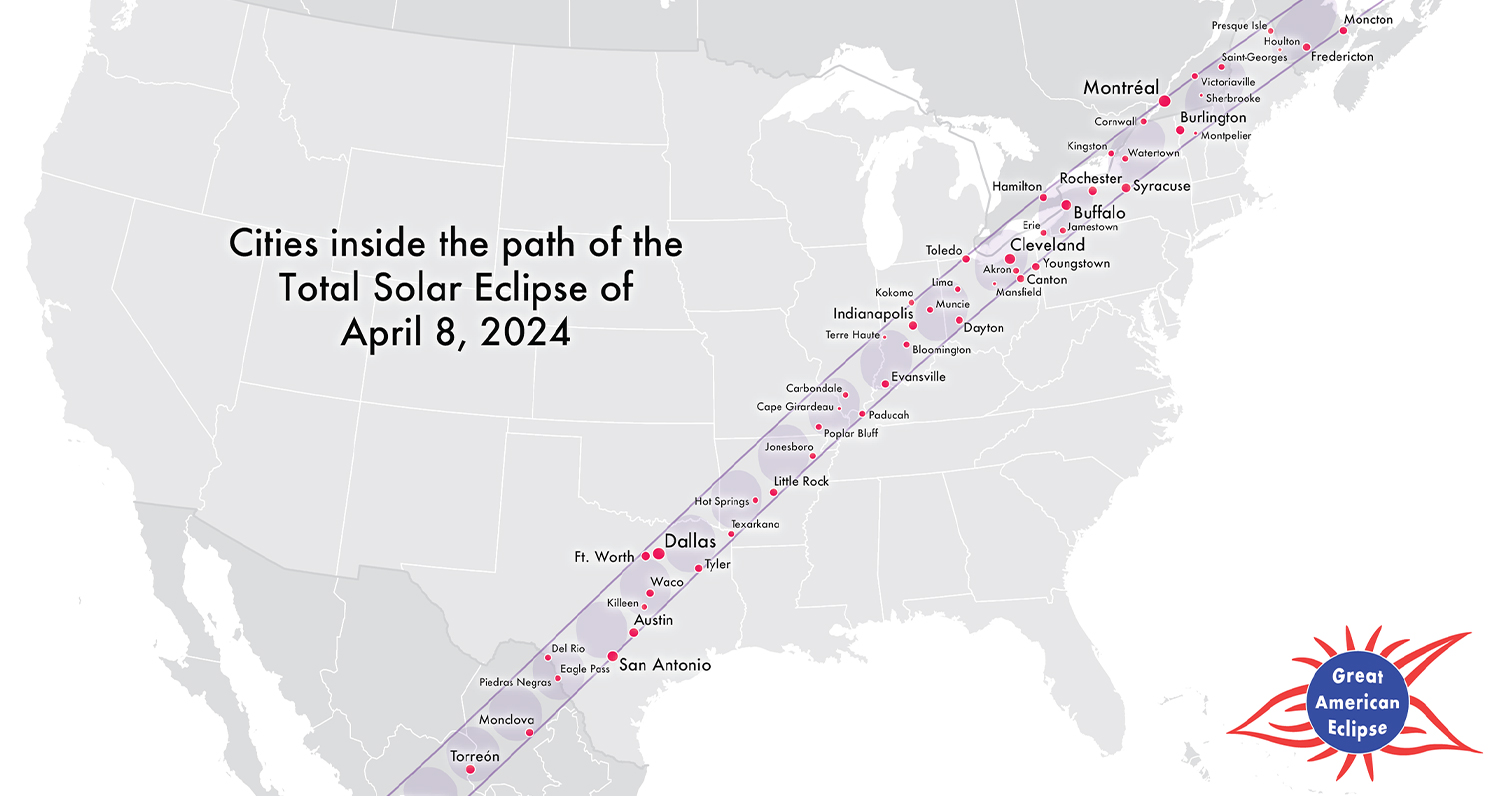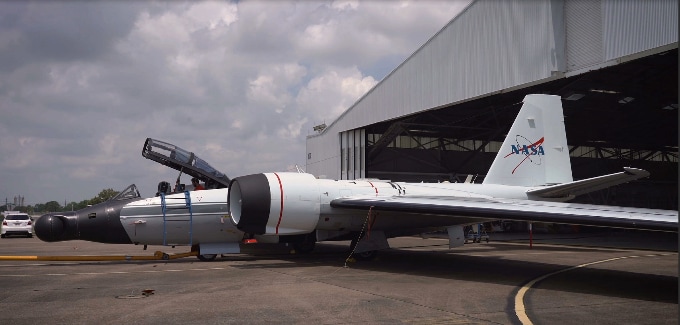
The sun’s corona is on full display in this composition of 161 photographs taken from Mitchell, Ore., during the August 21, 2017, solar eclipse.
Miloslav Druckmüller, Peter Aniol, Shadia Habbal/NASA Goddard, Joy Ng
- More than 2 years ago
Read another version of this article at Science News Explores
Solar eclipses are dramatic events as a rule. But the total eclipse coming on April 8 is going to ratchet up the experience.
Compared with the last total eclipse that crossed the United States, in 2017, this year’s total eclipse will last longer, the sky will fall darker, and the sun itself will put on a much livelier show. And millions more people will be able to step outside their front doors to see one of the most astounding astronomical events of their lives.
It will also be the last major eclipse to cross North America for 20 years. All of that means that it’s an especially rare opportunity for casual observers and scientists alike. Here are a few things to know about this spectacular event.
Why will this eclipse last longer and feature a more active sun?
The moon will be at a point in its orbit that’s comparatively close to Earth in April, making the moon appear particularly large. As a result, for anyone fortunate enough to make it to the path of totality — where the moon completely blocks out the sun’s disk — it will be an especially dark eclipse that will last for nearly 4½ minutes. That’s almost two minutes longer than the Great American Eclipse of 2017 (SN: 8/11/17).
What’s more, the sun will be close to solar maximum in 2024. That’s the peak of its roughly 11-year activity cycle. As a result, lots of bright, petal-like streamers of plasma will extend from the solar corona, the sun’s outer atmosphere. The increase in solar activity also ups the chances of a coronal mass ejection, a large puff of hot gas trapped in a loop of magnetic field that’s blasted away from the sun’s surface.
A longer time to observe the eclipse and a more active sun will make it both a better show and a boon for scientists who have more telescopes, sensors and satellites available to study the sun than ever before. Even viewers without other equipment should be able to see the streamers and a coronal mass ejection, if it occurs.
What’s different about this eclipse’s path?
“There’s nearly 32 million people [who will be] inside the path [of totality],” says cartographer Michael Zeiler. That’s about 2½ times as many as during the 2017 eclipse. And “the major East Coast metros from Baltimore to Boston are all about 200 miles from the path of totality.”
That means that the path of totality is going be very accessible to the bulk of the U.S. population, says Zeiler, founder of GreatAmericanEclipse.com. The eclipse will be visible to some degree in every U.S. state as well as portions of northwestern Mexico and southeastern Canada.

The 2024 eclipse path will also be particularly helpful for researchers who use radar to study charged particles high in the atmosphere. Unlike the last two North American eclipses, says space scientist Bharat Kunduri of Virginia Tech in Blacksburg, this year’s path passes within the observing range of three radars in the worldwide Super Dual Auroral Radar Network.
Those radars monitor a gaslike plasma of positively charged atoms and negatively charged electrons in the Earth’s atmosphere, created when the sun’s rays kick electrons off atoms. The plasma makes up the ionosphere, which can act like a mirror for radio signals and bounce signals from terrestrial transmitters back down to receivers, instead of letting the signals head out to space. That extends the range that transmitters can reach. The ionosphere also modifies the transmission of signals down to Earth from GPS satellites. Taking that effect into account is crucial for ensuring that GPS systems are accurate.
During a solar eclipse, as at nighttime, all the radiation from the sun goes away, and the atmosphere becomes a little less dense and less ionized. “And radio waves can behave differently,” Kunduri says. Using the instruments in the radar network during an eclipse can help scientists better understand how the sun generates the ionosphere and how the plasma layer affects transmissions from satellites and radios.
An eclipse “gives you an excellent opportunity to study what happens when there is a sudden change in the upper atmosphere,” he says.
What’s unique about this chance to spot a coronal mass ejection?
Because of the sun’s elevated activity this time, the chances are unusually high that terrestrial eclipse observers and space satellites could have the opportunity to simultaneously study a coronal mass ejection. Both the European Space Agency’s Solar Orbiter and NASA’s Parker Solar Probe will be looking at the sun from the side while the eclipse is happening.
That means that ground-based observers would be able to watch a coronal mass ejection traveling out from the sun, while the satellites would see the event head on, if they happen to lie in the path on an ejection, and could take samples as the solar material goes blasting past. It’s the only time in the lifetimes of the two satellites that the arrangement will coincide with an eclipse at solar maximum.
“If we would be so lucky to have one,” says astrophysicist Nour Raouafi of Johns Hopkins Applied Physics Laboratory in Laurel, Md., and it’s “propagating toward the spacecraft … it will be fascinating to see it during a total solar eclipse.”
Scientists want to know more about coronal mass ejections because the solar eruptions, when aimed at Earth, can disrupt communications and power grids, and potentially threaten satellites or astronauts in orbit around Earth.
In addition to observing any ejection, the satellites’ observations could help confirm the source of particularly speedy solar winds, which seem to be accelerated by kinks that develop in magnetic fields near the surface of the sun (SN: 7/7/23).
Insights into the solar wind, in turn, help explain how coronal mass ejections can affect Earth. That’s because the ejections, Raouafi says, pile up material in the solar wind, which “will affect the arrival time of these events to earth. So, knowing the conditions of the solar wind before the [ejections] is extremely important to predict when they are arriving or how important they will be.”
What are some of the ways that scientists plan to study this eclipse?
Several experiments planned for 2024 are repeats from past eclipses. Some feature updated instrumentation. Others will benefit from observations gathered while the sun is near its solar maximum, allowing for comparisons to the more quiescent phase that the sun was in during the 2017 eclipse. All the 2024 experiments should enjoy the improvement in data quality and quantity that comes with the longer viewing time.
Take the WB-57F jet planes that carried instruments to observe the 2017 eclipse while flying along its path of totality (SN 5/29/18). They will be in the air again in April, says physicist Amir Caspi of the Southwest Research Institute in Boulder, Colo. “It’s a big improvement because we’re flying new instruments [that provide] better information. The fact that it’s solar maximum will give us a lot more things to look at.”
Improved cameras and spectrometers, for example, will offer detailed views of the corona close to the sun’s surface. “This eclipse is also twice as long as the last one. On the ground, it’s 4.5 minutes,” Caspi says, “In the air, we’re going to get 6.5 minutes per airplane.”
If all goes well, he says, they could also discover some asteroids thought to exist within the orbit of Mercury, which are difficult to detect without the moon blocking the sun’s glare.

Astronomer Shadia Habbal of the University of Hawaii in Honolulu is leading a team that will fly updated cameras and spectrometers on the jets as well. She’s also setting up ground-based observations at sites in Mexico, Texas and Arkansas.
Habbal is even planning to send a spectrometer four kilometers aloft on a kite from a location near Kerrville, Texas, to get above any clouds that might block the view. The spectrometer collects light from the sun to determine the composition of material in the corona. “There are changes in the corona that occur on time scales of seconds to minutes to hours,” she says. “So the longer duration [of the eclipse] also enables us to capture [more] time variable events and their impact on the corona and solar wind.”
Other repeat experiments include weather balloons that will measure waves of pressure in the atmosphere that ripple away from the passing shadow of the eclipse. And a newly redesigned spectrometer will ride aboard a Gulfstream jet chasing the eclipse over Texas.
There’s also a number of new or improved ways that amateurs can contribute to the effort, including helping make an eclipse megamovie by taking pictures of the event (SN: 10/18/23).
An astronomical event to remember
Once this year’s eclipse wraps up, that will be it for North America for a while. In 2033, Alaska will get an exclusive show in the western part of the state — which might partly make up for it having the worst seat in the house, as far as U.S. states go, this time around. (Only a sliver of the state will be within range to see a portion of the sun covered up.) After that, there will be an eclipse primarily over Canada in 2044, and another that will cross the United States and eastern South America in 2045.
While the astronomical event on April 8 will be both livelier and longer than many eclipses, Habbal says that it doesn’t diminish the importance of studying other eclipses. “Every total solar eclipse yields new discoveries.”
If you’re one of the lucky tens of millions of people who will have a chance to enjoy totality in person, or among of the hundreds of millions within range of the partial eclipse, this is an astronomical event you won’t want to miss.







